The GIGABYTE H370N WiFi Review: Mini-ITX with HDMI 2.0 and 802.11ac Wave 2
by Joe Shields on June 21, 2018 9:01 AM EST- Posted in
- Motherboards
- Intel
- Gigabyte
- Mini ITX
- Core 8th Gen
- Coffee Lake
- H370
Visual Inspection
Small form factor boards, like the Mini-ITX H370N WIFI we are looking at today, do not have a lot of room to make the boards look pretty. Typically we see heatsinks that can give the boards some flare, and perhaps some stenciled pattern working its way through any of the free space on the PCB. In this case, the H370N WIFI doesn't use any stenciling on the black PCB but uses the heatsinks and RGB LEDs to give it some life. At a high level, we see CPU power and three 4-pin (hybrid) fan headers up top, two DRAM slots, SATA ports, and ATX power on the right, while a black PCH heatsink, a reinforced PCIe slot, and the first (of two) M.2 slots are just above it. The back of the board is where the second M.2 slot is hiding out.
A total of four RGB LEDs are on the bottom left-hand corner of the board under the audio stack which gives the board a nice, if unbalanced, glow when in use. If additional lighting is needed, the board does have a 4-pin RGB header located just below the front USB 3.0 header on the bottom right-hand corner of the board. It also has a 3-pin digital RGB header just behind the Wireless module. The integrated and attached RGB LEDs are controlled through GIGABYTE's RGB Fusion software.
Being an 'H' series board, we know that the intent here is to use a locked processor and run things as Intel designed them. In other words, there isn't any overclocking on the board for the CPU and Memory. To that end, we will not see incredibly robust power delivery bits as it does not need to support more than what the CPU is listed at stock.
In this case, GIGABYTE uses an Intersil ISL95866 multi-phase (4+3) PWM controller driving On Semiconductor NTMFS4C06N and NTMFS4C10N MOSFETs. Feeding power to these IC's is a single 8-pin EPS 12V connector.
Spinning the board around, on the right side we are able to see the two DDR4 DRAM slots supporting up to 32GB of DDR4-2666 RAM in grey, while the four black SATA ports are vertically oriented located closer to the edge of the board. We can also see the USB3.0 and USB 2.0 headers as well as the front panel header in white in the middle. There are a lot of connections shoe-horned in there, but, with the size of the board, there isn't much else board designers can do.
Above is a closeup of the SATA and USB ports/headers and the front panel header. As with most boards, RAID 0,1, and 10 is supported through SATA.
The bottom part of the board is where we'll find the first M.2 slot with the connector just to the right of the PCH heatsink supporting up to 80mm drives. I am a bit concerned with the chipset heatsink sitting immediately below as those devices get a bit warm as is without the help of something else so close.
There is no special arrangement for audio, except a few filter caps. The Realtek ALC1220-VB is nominally a 7.1 channel audio codec, however GIGABYTE has chosen only to give a 2.1 jack stack.
The back panel IO has a total of five USB ports, three display outputs for the integrated GPU, dual RJ-45 ports for the Intel-based NICs, the CNVi based Wi-Fi module, and a 3-plug audio stack. Some may feel a bit claustrophobic with five USB ports (and no USB 3.1 10 Gbps ports), but outside of that, has what is needed for most users. The board offers dual HDMI ports with one supporting HDMI 1.4, the other, supporting HDMI 2.0 through its Megachips MCDP2800 converter chip which will allow 4K at up to 60 FPS - a feature found on only a few motherboards.
- 1 x DisplayPort
- 2 x HDMI
- 1 x USB 3.0 Type-C
- 4 x USB 3.0
- 2 x RJ-45
- 2 x SMA antenna connectors
- 3 x Audio Jacks
In the Box
GIGABYTE Includes the following:
- User's Manual
- Quick Installation Guide
- Driver Disk
- 2 x SATA cables
- SMA antenna
- Rear I/O plate



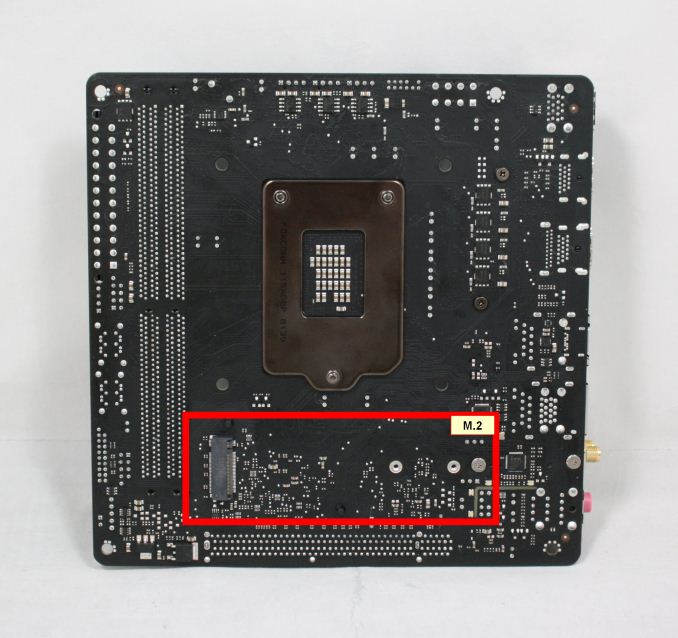
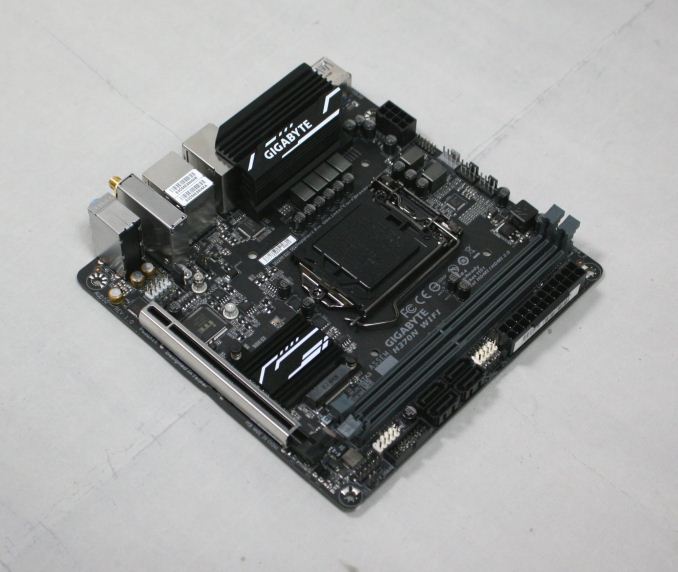
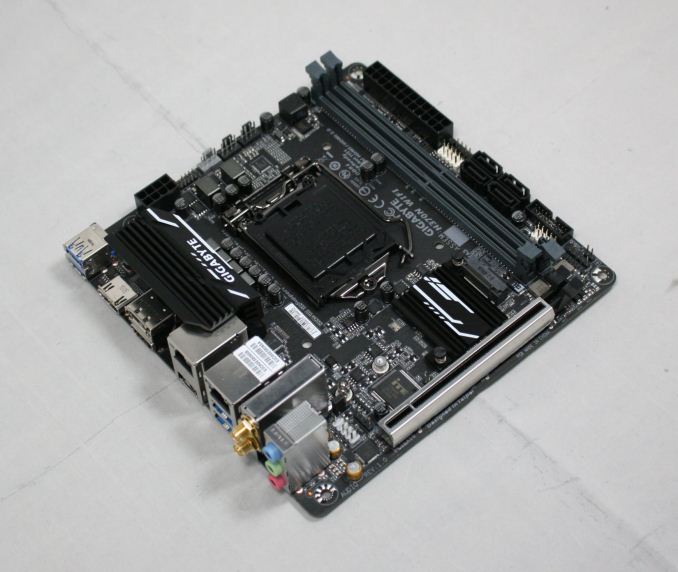
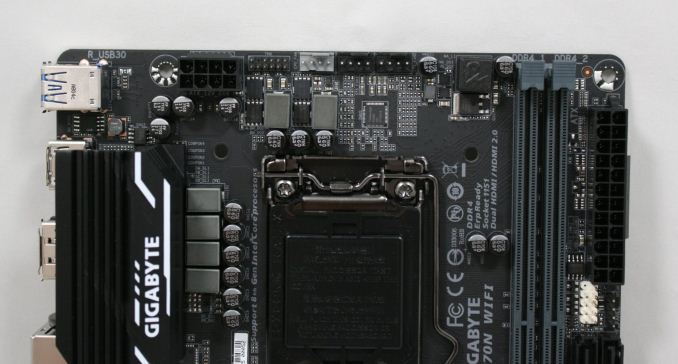
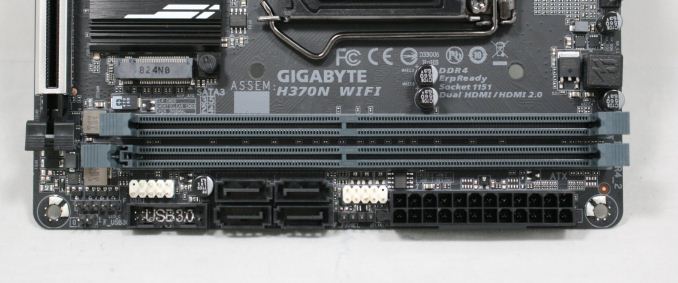
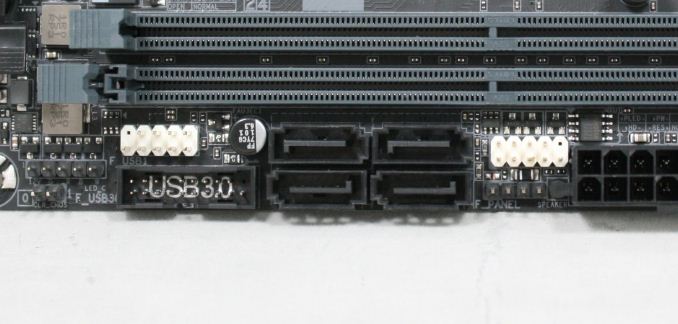
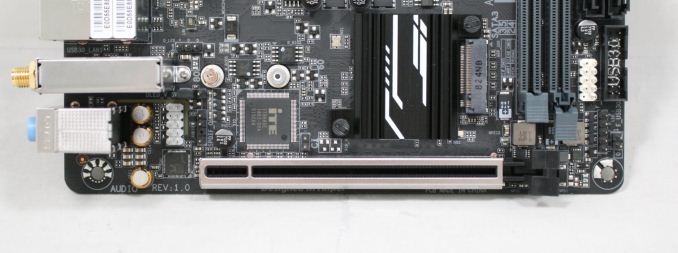
















23 Comments
View All Comments
Incolumis - Thursday, June 21, 2018 - link
Why can't manufacturers completely switch to USB Type C, and discard all the old and bulky USB connections? I will not buy a new mobo and case until this happens. To me USB Type C is the dream-connector, i'd use it for video, networking, and peripherals.keebs63 - Thursday, June 21, 2018 - link
because very few products actually use USB C connectors.... I want a PC, not a Macbook, I'm not going to use a freaking dongle for my mouse, keyboard, and external HDDs.Incolumis - Thursday, June 21, 2018 - link
And if the mobo included 4 USB Type C ports? and the case 2?Galcobar - Thursday, June 21, 2018 - link
For most people that would be four or five Type C ports too many, given the dearth of devices which use the connector. It's not as if Type C conveys any capabilities the other connector formats do not, other than being orientation-neutral.LauRoman - Thursday, June 21, 2018 - link
if all/most would be tb3 also, then maybe, but when is that gonna happen considering the limited pcie lanes, and the fact that in lot of cases even m.2 slots share the connection with a sata port or two.Even if bandwith becomes available, do you really trust usbc to hold someting like a usb stick or a wireless dongle and stuff?
dromoxen - Saturday, June 23, 2018 - link
Tb3 conveys a significan charge , I choose between two mobos almost exactly the same (minus some bling) one with TB3 +£40 .. way too much premium on a midpriced mobo.close - Tuesday, June 26, 2018 - link
@Incolumis: Thinking before commenting is both easier and cheaper but you still didn't. Now imagine removing all USB Type A ports ;).They won't switch any time soon because motherboard manufacturers and basically every single other person in the world literally don't care what you [one customer] want. They are designing a product that will appeal a wider market. And most people do not have ANY Type C to Type C cables.
But you want someone to market a mother board that gives you what you want AND removes what other people want. So hold in there, I'm sure in 5 years you'll be able to but a new motherboard.
MadAd - Saturday, June 23, 2018 - link
which is exactly why we are in the mess we are, nobody has it so nobody wants it so nobody has it because nobody...So how do you propose we move on? Peripherals tend to be multi generational devices (for me at least) so the mobos will have to change first, hopefully sooner rather than later.
The more holes for C devices there are the more people will adopt them, and yes to bridge the multi generation thing we will use dongles, or a hub, (USB hubs are quite inexpensive for your legacy pre-C devices) to get from here to there.
Stop being a luddite, its the progress we need.
EnzoFX - Monday, June 25, 2018 - link
We need COURAGE.-just thought it was an easy joke to make. Kind of indifferent myself.
EnzoFX - Monday, June 25, 2018 - link
Actually, maybe someone like Asus can pull this off. They make the boards, don't they make peripherals now too? And now cases? They can easily push the high end by offering everything in USB-C for those nice premiums. Then it can trickle down and other manufacturers will have to catch up.